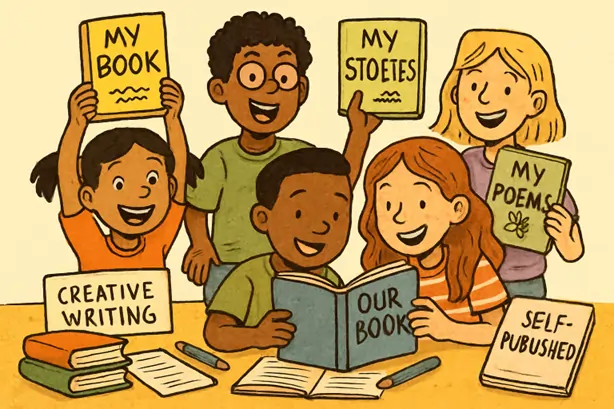Empowering Student Authors: Free Publishing Strategies
Introduction
Empowering young writers through publishing is a transformative path that builds literacy and self-esteem. When students can see their ideas come to life in print or digital form, their motivation soars and their narrative skills develop tremendously. Today, educators and communities have access to a wealth of free book publishing for students options, opening doors for budding authors to share their work and connect with readers.
While many students may love crafting stories, the practical logistics of publishing can seem daunting and costly. However, digital platforms, classroom initiatives, and community partnerships are revolutionizing the landscape, making book publishing accessible, engaging, and—most importantly—free for students everywhere. By strategically leveraging these resources and fostering a supportive environment, educators can inspire a new generation of storytellers who feel confident in reaching an audience.
Digital Publishing Platforms
Web-based publishing platforms have become one of the most effective ways for students to publish their stories, poems, and essays. Sites like Write the World offer an interactive environment where students can upload work, receive valuable peer feedback, and participate in writing challenges. These platforms typically offer free membership, making them accessible for classrooms and individuals alike. Students gain real-world publishing experience and enjoy the thrill of reaching a global audience.
Community-Supported Publishing
Powerful opportunities emerge for student publishers when schools and local organizations join forces. School libraries can work with local businesses, parent-teacher associations, and nonprofit groups to host free book fairs, sponsor print runs of student-authored books, or organize writing workshops. Community sponsorships not only supply resources but also foster a culture of literacy and support around young authors, showing students that their voices are valued locally.
Classroom Publishing Projects
Classroom-wide book projects are a dynamic way to integrate publishing into school curricula. Whether it’s a collection of personal narratives, a poetry anthology, or a collaborative fictional tale, teachers can lead students through every stage of book creation—from brainstorming and drafting to editing and design. Free educational publishing kits can help teachers facilitate the process and provide students with a professionally bound copy of their finished work to treasure and share.
Writing Contests and Anthologies
Encouraging students to participate in writing competitions opens them up to both recognition and the prospect of publication. Schools and educators can tap into youth writing contests run by national and international organizations, many of which culminate in anthologies featuring the winning or most notable entries. This achievement can bolster students’ confidence and provide a motivating milestone. For educators, these contests offer an opportunity to align classroom learning objectives with real-world recognition.
Teachers and students can also explore comprehensive resources and lists of reputable contests compiled by sources, ensuring student effort is directed toward reputable opportunities.
Self-Publishing Tools
The growth of digital self-publishing tools has revolutionized student book creation. Platforms empower students to craft and design their own digital books, integrating images, multimedia, and custom layouts. These tools often feature free versions for educators and students. For young writers, self-publishing offers both creativity and control, encouraging experimentation while developing digital literacy skills relevant for the future.
Collaborative Online Writing
Online collaboration tools turn writing into a shared experience. Platforms let students co-author pieces, offer peer reviews, and publish to a closed or public audience in a secure, teacher-moderated environment. This fosters community within the classroom and beyond, while teaching the importance of constructive feedback—a core part of the writing process.
Research shared by Edutopia shows that students thrive when given authentic audiences and collaborative publishing opportunities, strengthening not just writing skills but communication and teamwork abilities as well.
Library and Nonprofit Programs
Many libraries and nonprofits are committed to elevating youth voices through publishing. Initiatives run writing workshops and literacy programs and offer grants for student With effective Grant Writing, these organizations can secure the funding needed to expand youth publishing programs and provide more opportunities for young authors to share their voices. publishing projects, Public libraries may also feature local student-authored books in their collection or host author events, demonstrating that young writers have a valued place among published authors in the community.
Celebrating Student Authors
The final step in the publishing journey is celebration. Organizing book launch events, classroom readings, or school assemblies to showcase student publications helps cap off the experience. These celebrations can involve student readings, displays, and opportunities for students to sign copies for family and friends. Public recognition is vital for sustaining interest in writing and encourages ongoing creativity among all students, not just the published few.
By combining these creative strategies, teachers, librarians, and community leaders can give every student the chance to see their work in print or online. With the right support and access to free book publishing for student programs, we can inspire a lifelong love for storytelling, reading, and the written word.
Read more: How Smart Towing Practices Are Transforming Heavy-Duty Hauling – SizeCrafter
How Grounding Mats Help You Sleep Better and Restore Natural Balance – SizeCrafter
Why Laws That Protect Mental Health Patients Are Essential for Better Care – SizeCrafter

